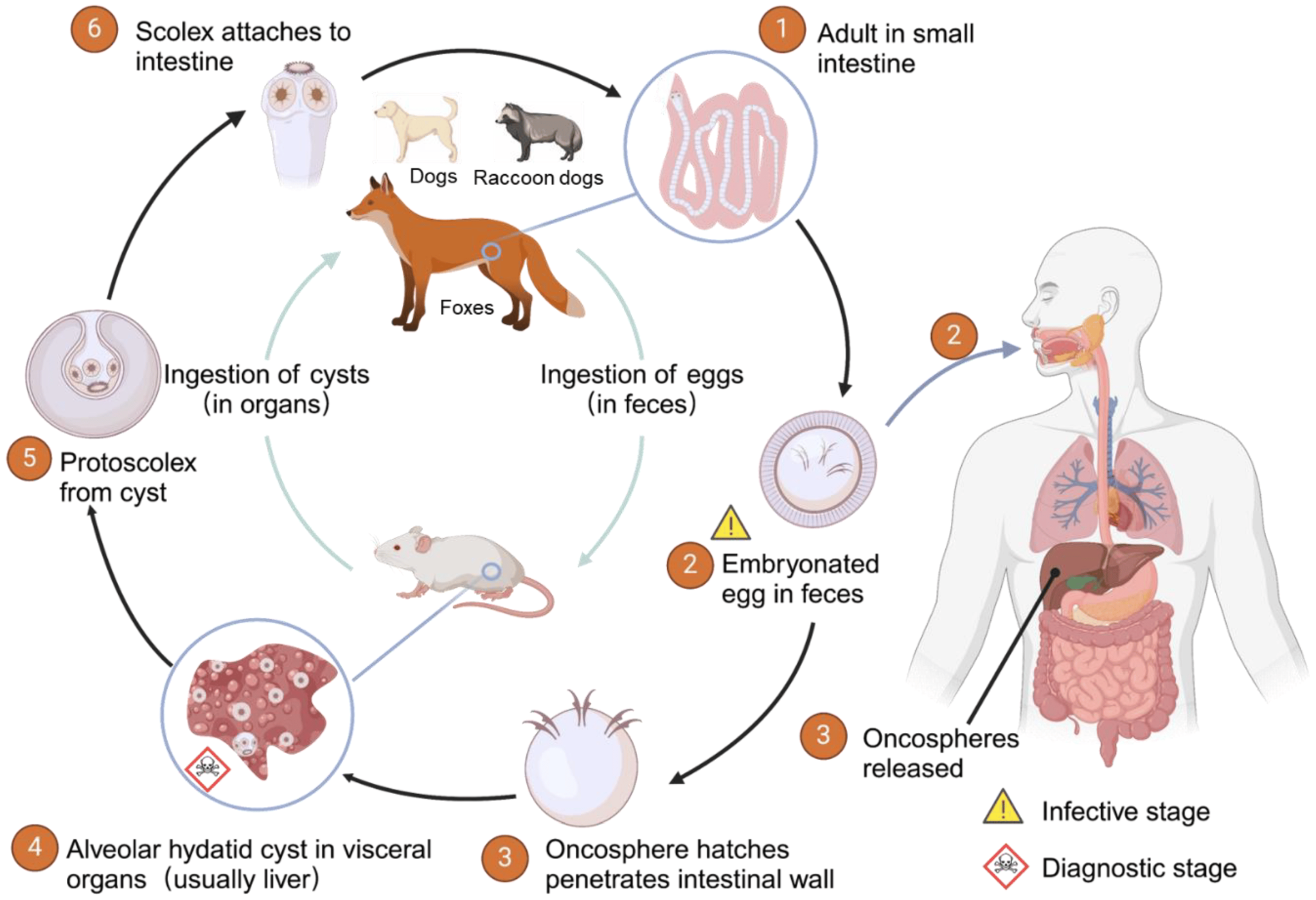Abstract
Alveolar echinococcosis (AE), caused by the larval stage of the tapeworm Echinococcus multilocularis, is a serious parasitic disease that presents significant health risks and challenges for both patients and healthcare systems. Accurate and timely diagnosis is essential for effective management and improved patient outcomes. This review summarizes the latest diagnostic methods for AE, focusing on serological tests and imaging techniques such as ultrasonography (US), computed tomography (CT), magnetic resonance imaging (MRI), and positron emission tomography/computed tomography (PET/CT). Each imaging modality has its strengths and limitations in detecting and characterizing AE lesions, such as their location, size, and invasiveness. US is often the first-line method due to its non-invasiveness and cost-effectiveness, but it may have limitations in assessing complex lesions. CT provides detailed anatomical information and is particularly useful for assessing bone involvement and calcification. MRI, with its excellent soft tissue contrast, is superior for delineating the extent of AE lesions and their relationship to adjacent structures. PET/CT combines functional and morphological imaging to provide insights into the metabolic activity of lesions, which is valuable for monitoring treatment response and detecting recurrence. Overall, this review emphasizes the importance of a multifaceted diagnostic approach that combines serological and imaging techniques for accurate and early AE diagnosis, which is crucial for effective management and improved patient outcomes.

文章链接:https://www.mdpi.com/2075-4418/15/5/585#